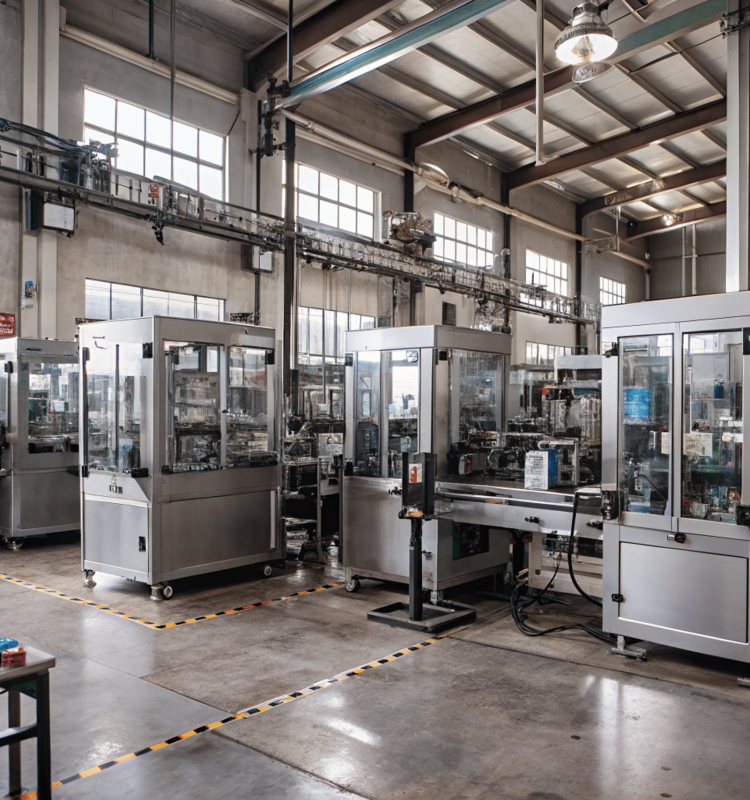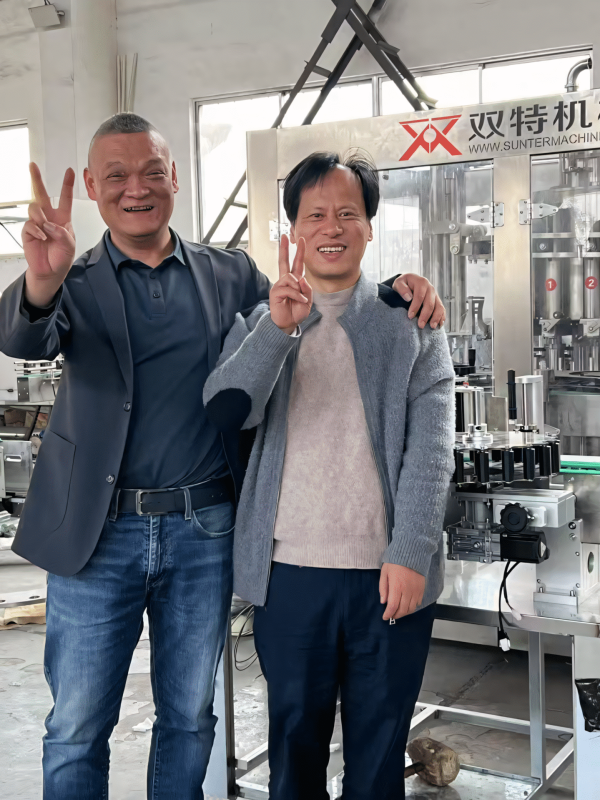Your edible oil production is inefficient and causing delays. This patchwork of machines hurts your profits and business growth. A customized, one-stop production line is the only real solution.
A complete edible oil production line requires integrating all stages, from bottle sorting to final cartoning. This creates a seamless, automated system that maximizes efficiency, ensures consistent quality, and reduces operational costs, boosting your overall productivity and profitability from start to finish.
I've been in this industry for over two decades. I've seen many companies grow, and I've learned how important an efficient production line is. A few years ago, a client from Shandong called me. He was frustrated because his filling line kept breaking down. Bottles were tipping over, he couldn't increase his speed, and he was about to miss a deadline for a big order.
I went to his factory to see what was wrong. The problem was clear. His equipment was a mix of different brands and stages. It was like a patchwork assembly. Of course it was not efficient. This experience taught me that filling is not just about "filling up." You need a full, customized solution. So, I decided to write this guide. I want to use my experience to help you build the best possible edible oil production line for your business.
How Can a Complete Edible Oil Production Line[^1] Improve Your Efficiency?
Are your manual processes slow and full of errors? This inefficiency is eating into your profits and hurting your ability to compete. A complete, automated production line is the answer.
A complete line improves efficiency by automating the entire process. This reduces manual labor and human error, optimizes the flow of materials, and uses real-time monitoring to prevent costly downtime and ensure consistent product quality.
When I talk about a "complete" production line, I mean a system where every machine works together perfectly. This integration is what creates a big jump in efficiency. You move away from separate, disconnected steps and create one smooth, continuous operation.
Reducing Labor and Errors
Automation is the first major benefit. When you automate tasks like filling, capping, and labeling, you need fewer people on the line . This directly lowers your labor costs. More importantly, machines are more consistent than people. They don't get tired or make mistakes. An automated filling machine delivers the exact same amount of oil every single time. This reduces product waste from overfills and eliminates customer complaints from underfills. This level of precision is something manual work can never match.
Optimizing Workflow and Uptime
A fully integrated line also means materials move smoothly from one station to the next. The conveyor system connects everything, so there are no bottlenecks or waiting times between steps . It's a continuous flow. Advanced control systems can also monitor the entire line in real-time. If there is a problem, like a misaligned label or a loose cap, the system can flag it immediately . This prevents small issues from turning into major shutdowns, which keeps your production running and your output high.
| Feature | Manual Process | Automated Line |
|---|---|---|
| Speed | Slow, limited by worker pace | Fast and consistent output |
| Accuracy | Prone to human error, waste | High precision, minimal waste |
| Labor | High labor costs, more staff | Reduced labor dependency |
| Uptime | Frequent stops for adjustments | Smoother flow, less downtime |
Ultimately, this increased efficiency means a shorter production cycle. You can fulfill orders faster, take on more clients, and grow your business.
What Are the Key Components of an Optimized Edible Oil Bottling Line?
Does your production line feel like a random collection of machines that don't work well together? This "patchwork" approach is a recipe for bottlenecks, breakdowns, and quality control headaches.
The key components of an optimized line are the bottle sorter, filling machine, capping machine, labeling machine, conveyor system, and inspection equipment. These parts must work together seamlessly to ensure an efficient, precise, and hygienic process.
A truly optimized production line is more than just its individual parts. It’s about how these parts are chosen and integrated to work as a single unit. Each component has a specific job, and if one fails, the whole system suffers. Let's break down what each part does.
From Sorting to Sealing
The process begins with the bottle sorting machine. It takes your bulk empty bottles and arranges them neatly in a row, ready for filling. This is the foundation of an automated line. Next is the filling machine, which I consider the heart of the operation. Its job is to fill each bottle with a precise amount of oil. Precision here is critical for controlling costs and ensuring product consistency. After filling, the capping machine takes over. It securely seals each bottle. A tight seal is essential to prevent leaks and protect the oil from oxidation, which preserves its quality and shelf life.
Labeling, Conveying, and Inspecting
Once sealed, bottles move to the labeling machine. This machine applies your brand labels accurately. This is important for brand identity and providing required product information to consumers. Linking all these stations together is the conveyor system. It automatically transports bottles from one machine to the next, creating a smooth and continuous workflow. Finally, you have inspection equipment. These systems check for things like fill level accuracy, proper cap sealing, and correct label placement. Any defective products are automatically rejected, ensuring only high-quality items make it to the final stage.
| Component | Primary Function | Importance for the Line |
|---|---|---|
| Bottle Sorter | Organizes empty bottles | Prepares bottles for automation |
| Filling Machine | Fills bottles with precise oil volume | Ensures product consistency and controls cost |
| Capping Machine | Seals bottles tightly | Prevents leaks and protects oil quality |
| Labeling Machine | Applies product labels | Provides brand identity and information |
| Conveyor System | Transports bottles between stations | Creates a smooth, continuous workflow |
| Inspection System | Checks for defects | Guarantees final product quality |
And remember, hygiene is critical. All equipment, especially the filler, should be made of high-quality stainless steel to prevent rust and make cleaning easy. This ensures your oil remains pure and safe for consumers.
What Should You Consider When Choosing an Edible Oil Cartoning Packing Machine?
Choosing the final packing machine can be a tough decision. Making the wrong choice can create a huge bottleneck, wasting all the efficiency you gained earlier in the line.
When choosing a cartoning machine, you must evaluate its production capacity, compatibility with your products, automation level, reliability, supplier support, and overall cost-effectiveness to ensure it meets your specific production needs.
The cartoning machine is the last step before your product is ready for shipment. It’s just as important as the filler or capper. A slow or unreliable cartoner will bring your entire high-speed line to a crawl. Based on my experience helping clients, here are the critical factors you need to think about to make the right choice.
Matching Speed and Specs
First, look at production capacity. The machine's speed, measured in cartons per minute, must match or exceed the output of your filling line. If it's slower, it becomes a bottleneck. Second is applicability. The machine must be able to handle your specific bottle shapes and sizes, as well as the dimensions of your cartons. Get samples tested before you buy. Third, consider the level of automation. A fully automatic machine that erects cartons, loads bottles, and seals the box will reduce your labor costs, but the initial investment is higher. A semi-automatic machine might be better if your volume is lower.
Evaluating Long-Term Value
Machine stability and reliability are non-negotiable. Look for suppliers with a strong reputation and proven track record. Downtime for repairs costs you money and production time, so a cheap machine that breaks down often is not a good deal. This leads to maintenance and after-sales service. Can the supplier provide quick technical support? Are spare parts readily available? A good partner will help you keep the machine running. Finally, evaluate the total cost-effectiveness. Don't just look at the purchase price. Consider the operating costs, labor savings, and maintenance expenses over the machine's lifetime to understand its true value.
| Consideration | Key Question to Ask | Why It Matters |
|---|---|---|
| Capacity | Can it keep up with my filling line? | To avoid a production bottleneck. |
| Applicability | Can it handle my bottles and cartons? | To ensure it fits your specific products. |
| Automation | How much labor will it save? | To balance investment cost with operational savings. |
| Reliability | What is the machine's uptime record? | To minimize costly downtime and repairs. |
| Service | Is the supplier's support reliable? | To get fast help when you need it. |
| Cost | What is the total cost of ownership? | To ensure you're getting the best long-term value. |
Making a smart decision here ensures your entire line, from start to finish, runs as a truly efficient and profitable system.
Conclusion
A complete edible oil line, with integrated components from sorting to cartoning, is essential. It boosts efficiency, ensures quality, and lowers costs, directly improving your business's profitability and competitiveness.
[^1]: Discover more about edible oil filling.


